Technical Service,Application,Construction Design,Consulting,Inspection,etc.
Outline
The Yellow River is the second large one in
XMDP is located at the last gorge of the middle stream of Yellow River near
In order to flush the silted sand and soil of the reservoir, there are three spillways to scour and flush the silted sand and soil at the bottom of the dam. Because of the high water fall and containing much more sand and soil, this yellow water run in high speed and cause heavy abrasion and cavitations erosion to the tunnels. See Fig. 1 and 2. No. 2 spillway is in the middle of these three ones and is the most serious damaged by high speed silt-laden flow.
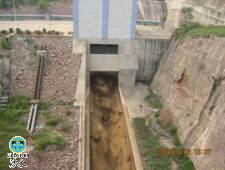
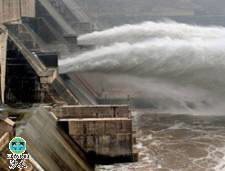
Figure 1 No. 2 Spillway Figure 2 Spectacular Scouring and
Past Work Review
Hydropower outlet works, such as spillway, freshet, bottom outlet, spillway dam, stilling basin and so on, often easily suffered from the damage of abrasion and cavitations and has not been effectively solved so far. Every year the repairing and consolidating constructions consumed a great deal of financial and labor resources. With the great development of hydropower dams in China and the building of dams with high water head of fall and heavy flow in the future in the Southwest areas, the problem of hydropower outlet works easily suffering from damage of abrasion and cavitations is increasingly concerned by designers, researchers and managers in China. In solving that, besides the scientifically designing of hydraulic structures, advanced materials researching and applying is necessary and important to meet the need of hydropower projects.
In order to effectively control or slow down the surface damage of outlet works from abrasion and cavitations, special materials research and application have been continuously conducted, mainly focusing on two aspects: One is the High Performance Concrete (HPC) application technology with the applying mechanism “harder to harder”. We often use high grade cerement and high strength aggregate to produce the C60 HPC. But the result is not ideal. The other is the new organic polymer composite coatings with the applying mechanism “tougher to harder”, which is to prevent from the damage of abrasion and cavitations by the high tensile and tear strength and high toughness.
In the past, the technology of modification of epoxy resin was mainly researched to increase its toughness and reduce the brittleness to enhance the abrasion and cavitations resistant ability. However, due to many disadvantages, such as weakness aging and the susceptibility to oxidation by ultraviolet radiation of many C-O bonds in epoxy molecular, the bigger coefficient of linear thermal expansion which resulted in easily crack, tilt and delamination. During application, slow curing, sagging and the release of much VOC are inconvenient operation in situ. So epoxy resin has been simply applied in some repairing constructions and can not be applied in large hydropower projects.
Highlight of SPUA
Under the promotion of Prof. Huang, the concept of Spray Polyurea Elastomer (SPUA) has been gradually popularized in
(1) Containing no catalysts, quickly setting, being sprayed on the curve, inclined and vertical surfaces with smooth appearance without any sagging, being able to sustain people to walk only after the coatings sprayed 1min and not be easily affected by the environmental temperature and humidity.
(2) 100% high solid content, no solvents and other volatile organic compound, non-pollution to environment, a real no VOC green product.
(3) Excellent properties of good flexibility, high abrasion resistant, high adhesive strength to steel, concrete, asphalt and other substrates, high self tensile strength and elongation etc. and outstanding self-aging endurance.
(4) Excellent endurance ability to high and low temperature from
(5) Being made into different color products by incorporated into different pigments and be able to be reinforced by adding some fillings such as short fibers.
(6) Equipped with the special settings with high operating efficiency at the spraying speed about
Lab Test
In order to test the properties of the damage of abrasion and cavitations by high speeding silt-laden flow, we design three C60 silicon fume HPC round samples whose dimensions is exterior diameter of
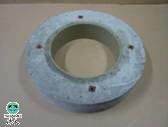
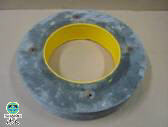
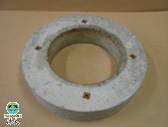
Fig. 3 SPUA Lining Fig.4 Granite Concrete Fig. 5 Limestone Concrete
Table 1 Abrasion results of SPUA and HPC samples scouring at high silt-laden flow
|
Abrasion resistant
Materials
Test items |
SPUA lining |
C60 HPC
granite aggregate f28=65.6MPa |
C60 HPC
limestone aggregate
f28=66.5MPa |
|
Abrasive weight loss
(g) |
<2.5 |
98.0 |
414.0 |
|
Rate of abrasion
(g/cm2. h) |
<0.00266 |
0.104 |
0.440 |
|
Notes |
No scouring traces and other changes in the lining surface, and even no traces on the orange peel surface due to spraying operation. |
Lots of much obviously scouring traces and defects in the inside surface of samples and aggregates exposure obviously due to the surface mortar abraded |
|
From table 1, it is obvious that the abrasion resistant property of SPUA is more excellent than HPC as C60 silicon fume concrete at high speeding silt-laden flow of
Application in XMDP
In August 20~30 this year, Prof. Huang went to XMDP to apply SPUA on the surface of No. 2 spillway. There are three methods to investigate the application procedures in table 2.
Table 2 Three methods of the application procedures
|
Method
Procedures |
A |
B |
C |
|
Water Jet |
Yes |
Yes |
Yes |
|
Bughole Filling |
Yes |
Yes |
No |
|
Moist Primer |
Yes |
Yes |
Yes |
|
Grey SPUA |
|
|
|
|
Edge Ending |
Foam Pipe |
Foam Pipe + Epoxy Putty |
Epoxy Putty |
In over 10 years career to research and develop SPUA, Prof. Huang find that the Ф40~
Fig. 6 show the foam pipe is adhesive with double side tape on the concrete surface with moist primer. The left sample is applied as A method and the right is applied as B method. After 10 days scouring with high speeding silt-laden flow, the speed is more than
Actually, method A is under the instruction guide of SSPC Surface Preparation Course-Concrete. But the unique foam pipe technology to end the edge is a great discovery to contribute to polyurea industry both in
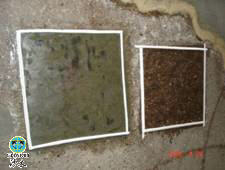
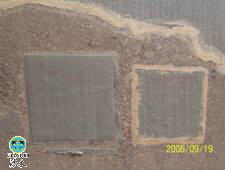
Fig. 6 Edge ending with foam pipe before spray polyurea Fig. 7 After scouring with high speeding silt-laden flow
Method C is simpler than A and B in Fig. 8. But after 10 days scouring with high speeding silt-laden flow, the lining was flushed away in Fig. 9.
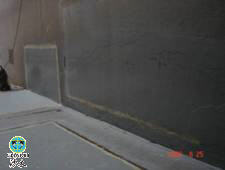
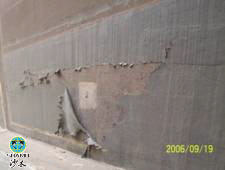
Fig. 8 Edge ending with epoxy putty Fig. 9 After scouring with high speeding silt-laden flow
Furthermore we sprayed grey SPUA coating at Xin’anjiang reservoir spillway dam according to the above mentioned method A with 1200 square meters for a large scale test. See figure 10 and 11.
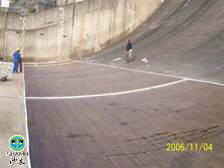
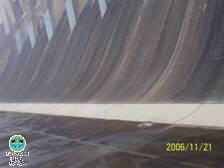
Figure 10 Substrate Preparation Figure 11 Finished
Conclusion
With the excellent mechanical properties and the advanced applying application characters, SPUA is catching the eyes of engineers in many industrial fields and has been increasingly investigated and applied in recent years. The damage of abrasion and cavitations in hydropower outlet works is a severe problem and has been much concerned in the world for many years. Based on the needs of the abrasion resistant protection of outlet works, the excellent abrasion resistant SPUA materials and the suitable moist primer were developed and the scouring test at high speeding silt-laden flow was conducted by using self-developed apparatus. Furthermore, SPUA technology was firstly successfully applied in the hydropower constructions. However, the research works on the cavitations resistance and applications in other outlet works should continue to be carried out and we wish the continuing researching, developing and applying technology of SPUA will provide a new method for effectively slowing down or solving the hydropower outlet works suffered from the damage of abrasion and cavitations at high speeding flow or silt-laden flow.